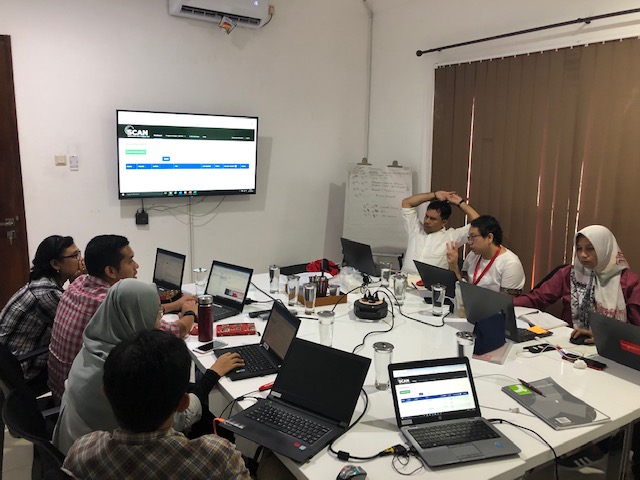
Dioptra
A multi-agency tool to simplify cost analysis and improve value for money of humanitarian and development interventions.
The IRC reaches over 30 million people each year with impactful services, but there is still a large unmet need due to conflict, disaster, and the climate crisis. Understanding and improving the per unit cost of our programs can allow us to reach more people with high quality and impactful programs within limited budgets.
Through cost analysis, the IRC doubled its cost-efficiency in some program areas, enabling us to reach an estimated 400,000 additional clients. We have codified the cost analysis methodology into Dioptra, a software tool for rapid and consistent cost-efficiency analyses of humanitarian programs.
The IRC leads a consortium of nine organizations with a combined $6 billion annual budget: Save the Children, Mercy Corps, Catholic Relief Services, Action Against Hunger ((Acción Contra el Hambre), CARE, the Norwegian Refugee Council and the Danish Refugee Council. We have also partnered with Microsoft Tech for Social Impact for their expertise in best-in-class technology. With the Dioptra tool, we are committed to generating and applying cost-efficiency lessons to our programs, enabling us to collectively reach millions more people with critical services.
Dioptra
Dioptra simplifies the process of conducting cost analysis, helping humanitarian and development actors make use of limited resources effectively and efficiently.
Dioptra is a software tool that uses program expenditure transactions and calculates the cost per output of program interventions. It is based on well-established industry standards for cost analysis . Critically, it leverages program staff’s firsthand knowledge of how programs were implemented, and how different expenses contributed to different programs. Beyond that, Dioptra enables us to compare those programs in ways not previously possible — across countries and organizations to identify opportunities for improvement.

How does it work?
- Step-by-step methodology for non-experts in low-resource settings. Dioptra streamlines the formerly time-consuming and complex process of conducting cost analysis, enabling program staff to easily input the best information available on how program resources were spent in the field.
- Automatically uses available transaction data in existing finance systems. By automating data collection, the time needed to conduct a cost analysis can be reduced from several days to a few hours, minimizing the extra burden on field staff’s daily work.
- Consistently categorizes and calculates costs incurred. Standardizing the analytical structure and embedding the methodology in an online tool ensures that all analyses will meet common methodological standards, allowing the results to be meaningfully compared. These insights help humanitarian and development actors make use of limited resources in a transparent and effective way.
Examples in actionDioptra and a focus on cost-efficiency has already been successfully tested by the IRC and the consortium: Education - The IRC evaluated alternative delivery approaches for an education program in the Middle East, Ahlan Simsim, and lowered program delivery costs from $155 to $52 per child. We estimate that this allowed us to expand programming and reach 400,000 more children with the same amount of spending. Cash - Using cost-efficiency data from more than 30 cash distribution programs globally, the IRC found that cash programs reaching more than 1,000 households were about two times more cost-efficient than those below that threshold, prompting new IRC guidance to reach at least 1,000 households to maximize the impact per dollar. Livelihoods - The IRC livelihoods program in East Africa, Re:BUiLD, uncovered that certain interventions enabled two to three times more refugees and host community members to achieve employment outcomes at the same cost compared to other interventions. This prompted a strategic shift, leading us to deprioritize less effective interventions in favor of those that enable us to reach more clients with greater impact per dollar spent. |
Potential impact
Beyond the consortium of current users, Dioptra has the capacity to significantly impact the $150 billion humanitarian aid sector, including public and private donors as well as United Nations agencies and international and local NGOs.

Current consortium NGOs are in dark grey color (which represents international NGOs), and include the IRC, Save the Children, NRC, DRC, CARE, ACF, CRS, and Mercy Corps (source: 2013 IRIN news)
Learn more: https://www.dioptratool.org/
Project Timeline
Generate comparative cost data across organizations
Open Philanthropy supports cost analysts at 5 NGOs to use Dioptra and generate cost data across multiple program outcomes, in coordination with the new Office of the Chief Economist in USAID. FHI 360 joined the consortium.
ResourcePilot Dioptra across more organizations
Completed analysis pilots with the Danish Refugee Council (DRC) and Catholic Relief Services (CRS). The Norwegian Refugee Council (NRC) joined the consortium.